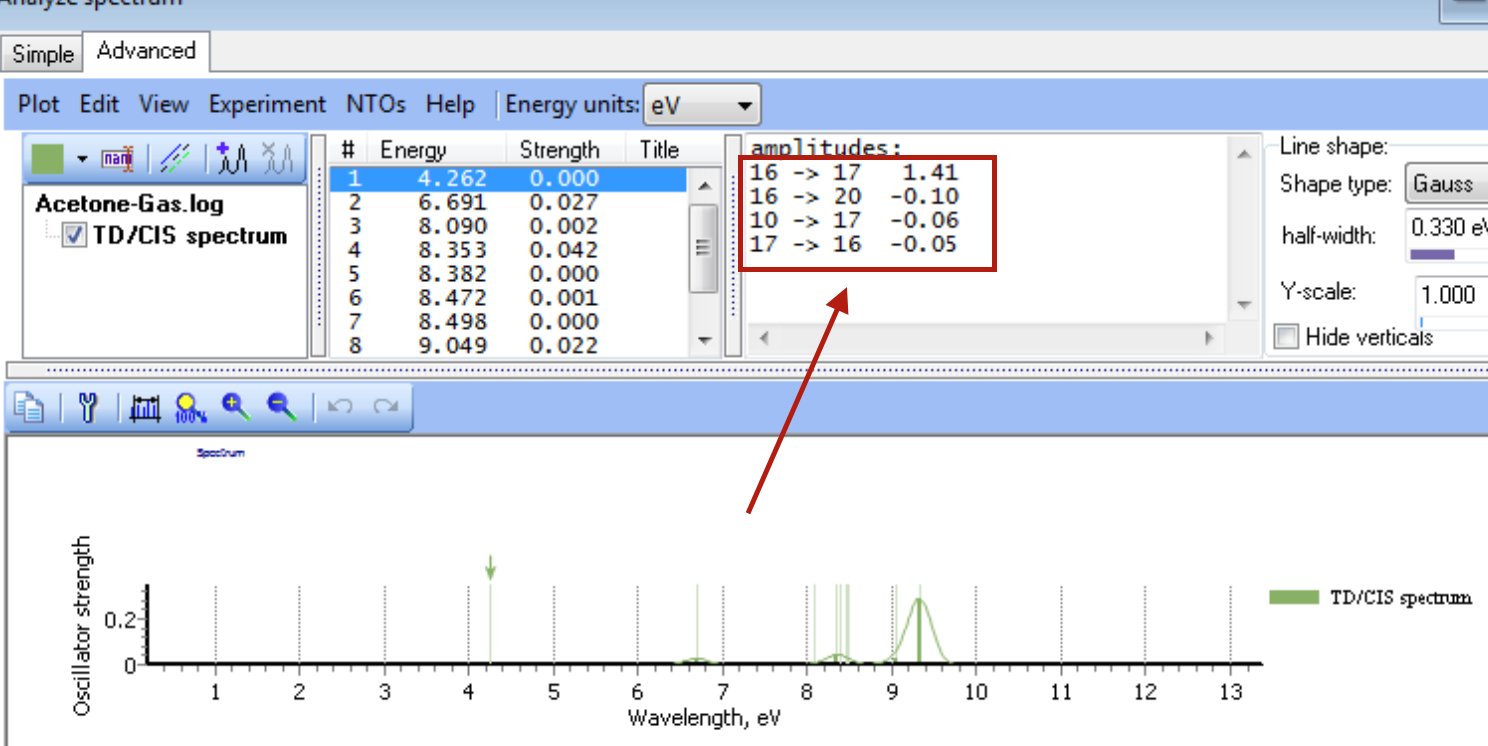I am trying to understand how to interpret the TDDFT results ( I know there is another post for this but it does not answer my question ). Here is part of the result from GAMESS:

I downloaded Chemissian and this is its result for this state:

I have two related questions:
1-How did it calculate this 1.41 from the amplitude of this state ?
2-Does it have anything to do with λmax ?
